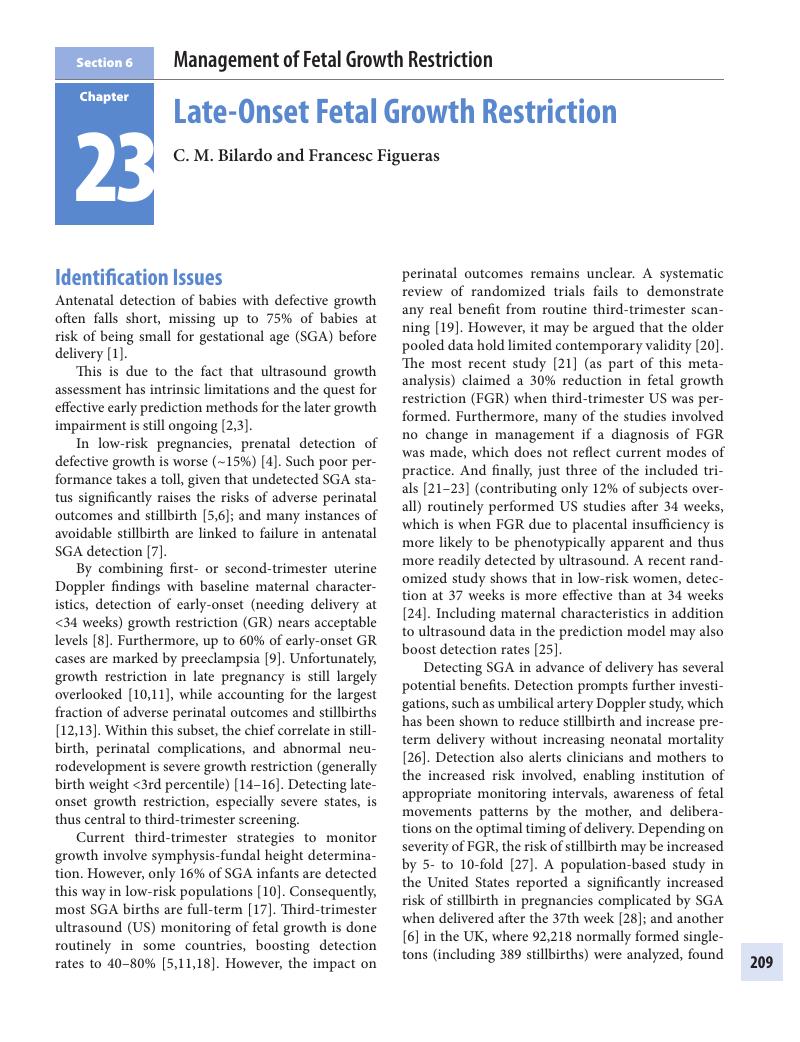Book contents
- Placental–Fetal Growth Restriction
- Placental–Fetal Growth Restriction
- Copyright page
- Contents
- Contributors
- Foreword
- Preface
- Glossary and Commonly Used Abbreviations
- Section 1 Basic Principles
- Section 2 Maternal Cardiovascular Characteristics and the Placenta
- Section 3 Screening for Placental–Fetal Growth Restriction
- Section 4 Prophylaxis and Treatment
- Section 5 Characteristics of Fetal Growth Restriction
- Section 6 Management of Fetal Growth Restriction
- Chapter 22 Management of Early-Onset Fetal Growth Restriction (Less than 34 Weeks)
- Chapter 23 Late-Onset Fetal Growth Restriction
- Chapter 24 Severe Fetal Growth Restriction: Pregnancy Management at the Limits of Viability
- Chapter 25 Fetal Growth Restriction in Twin Pregnancies
- Section 7 Postnatal Aspects of Fetal Growth Restriction
- Index
- References
Chapter 23 - Late-Onset Fetal Growth Restriction
from Section 6 - Management of Fetal Growth Restriction
Published online by Cambridge University Press: 23 July 2018
- Placental–Fetal Growth Restriction
- Placental–Fetal Growth Restriction
- Copyright page
- Contents
- Contributors
- Foreword
- Preface
- Glossary and Commonly Used Abbreviations
- Section 1 Basic Principles
- Section 2 Maternal Cardiovascular Characteristics and the Placenta
- Section 3 Screening for Placental–Fetal Growth Restriction
- Section 4 Prophylaxis and Treatment
- Section 5 Characteristics of Fetal Growth Restriction
- Section 6 Management of Fetal Growth Restriction
- Chapter 22 Management of Early-Onset Fetal Growth Restriction (Less than 34 Weeks)
- Chapter 23 Late-Onset Fetal Growth Restriction
- Chapter 24 Severe Fetal Growth Restriction: Pregnancy Management at the Limits of Viability
- Chapter 25 Fetal Growth Restriction in Twin Pregnancies
- Section 7 Postnatal Aspects of Fetal Growth Restriction
- Index
- References
Summary

- Type
- Chapter
- Information
- Placental-Fetal Growth Restriction , pp. 209 - 218Publisher: Cambridge University PressPrint publication year: 2018



